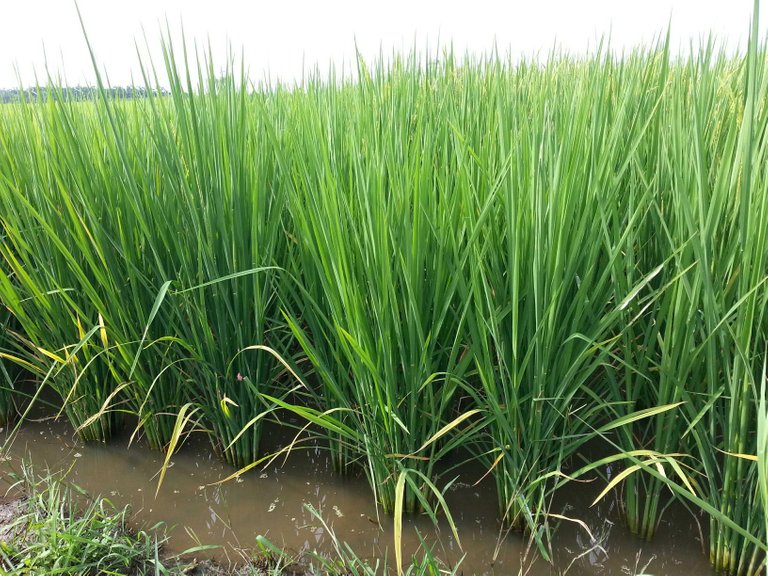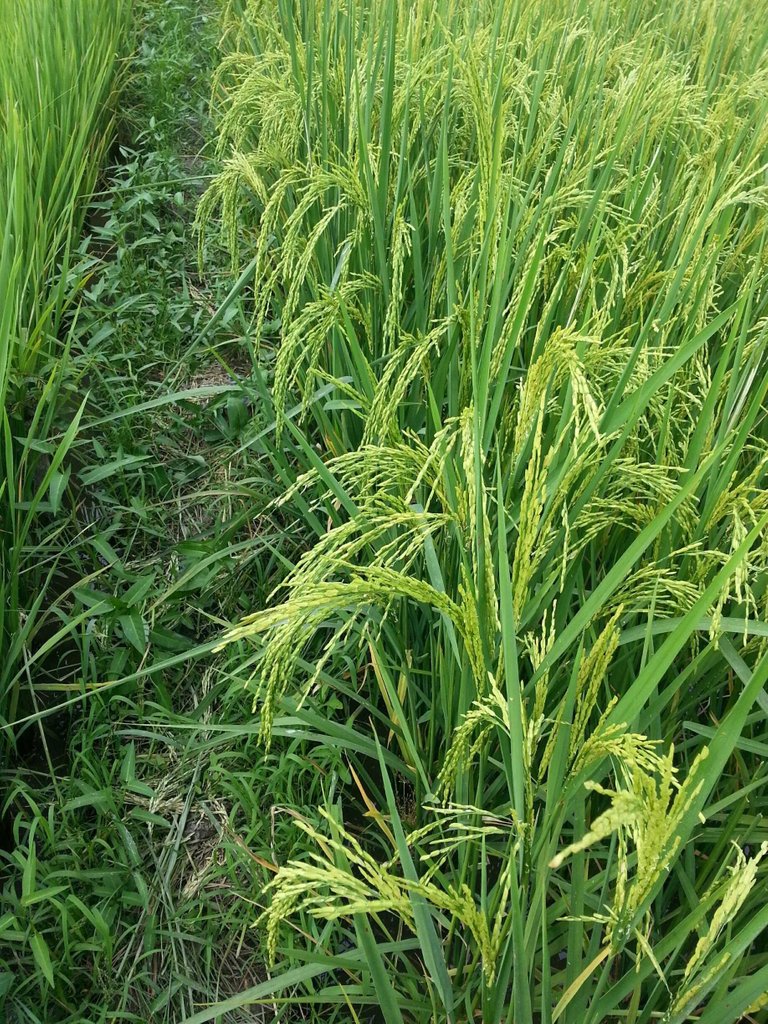headerPanicle initiation paddy
Spread the plant at this level with the initiation of flowers (panicle initiation). The panicle will look like a white fluid cone (white hairy cone) length 1.0-1.5 mm. First appeared on the main book segment (main stem) and then on the seedlings with irregular patterns. This will develop until the shape of the panicle is clearly visible. Bil spikelets are visible and distinguishable.
Young strands increase in size and develop into the bulge of bulge to bulge (bulge). Bubble leaf flag is called bunting as the second stage of this stage (boot stage).

quotePhase boot stage
Bunting is first seen on the main stem segment. At the pregnant stage, the tip leaves wither (old and dead) and non-productive seedlings are at the bottom of the plant.

#by fhotocircle
quote
Stage exit Malai
The next stage of this phase is the effort out panicles. Post the poster with the appearance of the panicle from the flag bust. The blinds continue to flourish completely out of the leaves.
The end of this phase is the flowering that starts from the pollen of the process and the process of fertilization.

#by fhotocircle
quoteFlowering stage
In flowering, the flower petals open, anther poking out of the petals (glume flowers) because of the prolongation of stamens and spilled pollen (warehouses). The flower petals are then closed. Pollen or pollen (pollen) falls into the pistil, NPU fertilization occurs. The pistil structure in which the pollen extract of the pollen appears, which will expand to the ovaries.
The process of flowering the paddy to almost all the spikelet on the panicle blooms. Flowering Occurs day after post. In general, florets (flower petals) light up in the morning. All spikelet on the net panicles in 7 days. In flowering, 3-5 leaves are still active.
The saplings in this rice plant have been liberated at the start of flowering and are grouped into productive and nonproductive tillers.
The reproductive phase that begins from flower initiation to flowering takes approximately 35 days. Giving substance regrowth or See plant hormone (pythohormon) in the form of gibberlin (GA3) and plant maintenance than necessary in this phase. The difference in the reproductive phase period between different and different varieties of paddy is not different. Needing water in this phase is necessary, especially at its peak may be stagnant 5 - 7 cm.
headerPhases of Ripening

#by photocircle
quoteMature milk stage
The last three stages of rice plant growth are the cooking phase. At this stage, the grain begins to fill with milk-like ingredients. Grain starts to fill with white milk, can be removed by combining / pinning the grain between two fingers. Green blinds and start ducking. Penning (senescence) on the basis of anakanigasi. The flag leaves and the two leaves underneath are green. This stage is most explored by the pest. At the time of charging, water is required and indispensable. As the address in the previous phase, in this phase is expected to have stagnant crops 5 - 7 cm.
Grain stage ½ mature (wheat dough stage)
At this stage, the language called milk turns into a soft blob and eventually hardened. The grain on the panicle starts to turn yellow. The senescence of the seedlings and leaves at the bottom of the plant appears to be increasingly clear. Crops look yellow. As yellowing the panicle, the last two ends of each tiller begin to dry.
Full mature grain stage (Mature Grain Stage)
Each grain is ripe, fully grown, hard and yellow. Rice plants at the mature stage 90 - 100% of the grain content turns to yellow and hard. The top leaves are dry out quickly (leaves of one of green). Dead leaves accumulate at the base of the plant. Unlike the initial cooking, the soil is left in dry conditions.
The maturation period, from mature stage until full ripe grain or physiological cooking lasts for about 35 days
headerBy @ahmadzamzami
quoteFollow and coment upvote me @ahmadzamzami
Upvoted
@pirata thank you for visiting post @ahmadzamzami